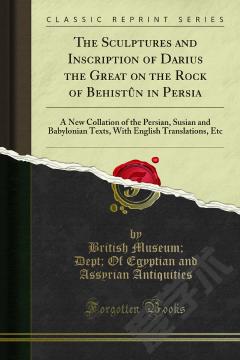The Sculptures and Inscription of Darius the Great on the Rock of Behistûn in Persia —— A New Collation of the Persian, Susian and Babylonian Texts, With English Translations, Etc
-----
ISBN: 9781331919902 出版年:2016 页码:338 British Museum Dept Of Egyptian and Assyrian Antiquities Forgotten Books
Karmanshah on the east. In riding from Karmanshah to the village of Bisutun, this range lies at some distance to the left of the traveller; it rises abruptly from the plain, and its summit is broken into a series of peaks and ridges. Its sides are pre cipitous, and in many. Places afford suitable surfaces whereon sculptures and inscriptions might be cut, but it is not until we come to the end of the range that we find any reliefs or inscriptions. The reason for this is not far to seek. At the foot of the last peak, which rises to a height of over feet, bubble up a number of Springs into a pool of water clear as crystal, supplying the small stream which flows by the village and away into the plain (see Plate II). Here from time immemorial caravans have halted and watered their beasts, and every army which has marched from Persia into Northern Babylonia has drunk at these famous springs. Moreover, probably by reason of the springs, the Rock was regarded as a sacred place, even as Diodorus says.1 It is clear that the sacred character of the mountain, and the existence of springs at its foot, and its. Bold and prominent position on the great highway between Persia and Babylonia, induced Darius the Great to choose the precipitous face of the mountain as a suit able place whereon to carve sculptures and texts which Should commemorate his conquests for all generations.








 京公网安备 11010802027623号
京公网安备 11010802027623号